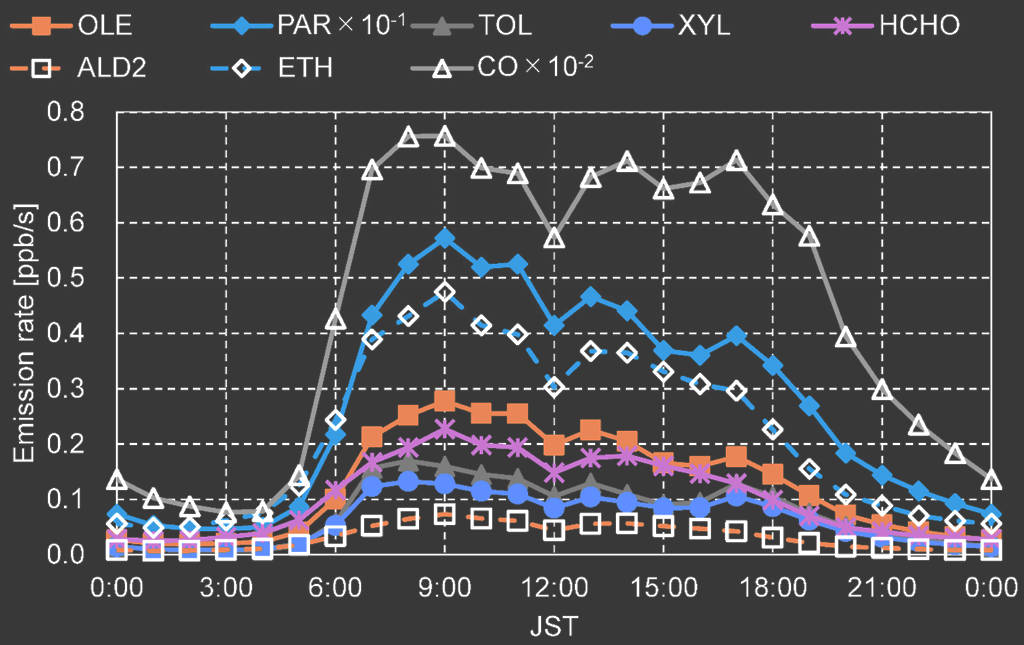By: Gonzalez Olivardia, F.G.; Matsuo, T.; Shimadera, H.; Kondo, A.
Abstract
Traffic-related air pollution in street canyons can cause health problems for pedestrians. In order to clarify the behavior of reactive pollutants, such as NOx and O3, in street canyons, a computational fluid dynamics (CFD) model coupled with a chemistry model and tree canopy model was developed, and then, a set of numerical experiments were performed to investigate the impacts of chemical reactions and aerodynamic effects of trees planted in a canyon. The results were compared with the observation data. Through the results of the numerical experiments designed to simulate a realistic urban street canyon, it was found that chemical reactions have a dominant impact on the NO/NO2 ratio and O3 concentration. While the tree canopy had little impact on the NO/NO2 ratio, it had a moderate impact on the flow field in the canyon and the amount of NOx and O3 in the canyon. In accordance with the aerodynamic effects of tree canopies, the local NOx concentration in the experiments increased and decreased by up to 51% and 11%, respectively. The current findings of this study demonstrate the utility of the proposed model for conducting air quality investigations in urban areas.
Atmosphere 2021, 12, 34.

